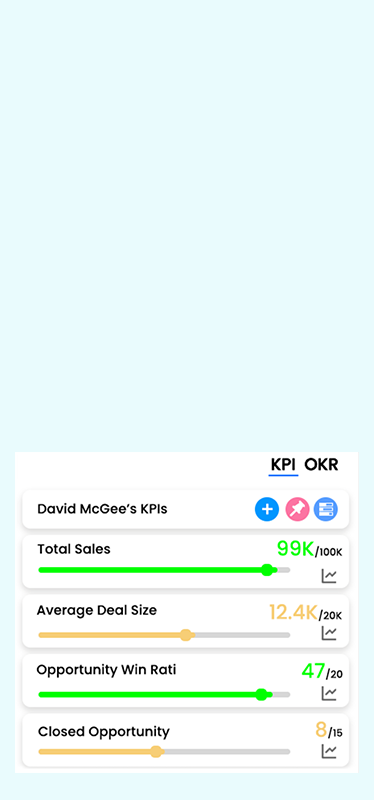Marketing Key Performance Indicators Examples


Measure what matters for your business with KPIs
Track business performance with real time key metrics against targets in one place without the need for multiple dashboards or reports
Marketing KPI
A marketing KPI, or key performance indicator, is a metric used to measure the performance and success of a marketing campaign or strategy.
Here are a few examples of marketing KPIs that can be used to measure the performance of different marketing campaigns and strategies:
Website Traffic
Key Performance Indicators Examples Website Traffic Website traffic refers to...
Read MoreSocial Media Engagement
Key Performance Indicators Examples Social Media Engagement Social Media Engagement...
Read MoreBranded Search Volume
Key Performance Indicators Examples Branded Search Volume Branded Search Volume...
Read MoreBrand Mentions
Key Performance Indicators Examples Brand Mentions Brand Mentions refer to...
Read MoreMarketing ROI
Key Performance Indicators Examples Marketing ROI Marketing ROI (Return on...
Read MoreMarketing Qualified Leads (MQL)
Key Performance Indicators Examples Marketing Qualified Leads (MQL) Marketing Qualified...
Read MoreUnique Visitors
Key Performance Indicators Examples Unique Visitors Unique Visitors, also known...
Read MoreClick-Through Rate
Key Performance Indicators Examples Click-Through Rate Click-Through Rate (CTR) is...
Read MoreLTV:CAC ratio
Key Performance Indicators Examples LTV:CAC ratio (Customer Lifetime Value to ...
Read MoreStickiness Ratio
Key Performance Indicators Examples Stickiness Ratio Metric The Stickiness Ratio...
Read MoreTrial Conversion Rate
Key Performance Indicators Examples Trial Conversion Rate Trial Conversion Rate...
Read MoreCustomer Lifetime Value
Key Performance Indicators Examples Customer Lifetime Value Customer Lifetime Value...
Read MoreCustomer Acquisition Cost
Key Performance Indicators Examples Customer Acquisition Cost Customer Acquisition Cost...
Read MoreIt is important to note that, the specific KPIs you choose will depend on your business goals and objectives. These are some common examples, but not an exhaustive list.